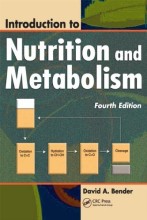NP6 Carbohydrate metabolism I
13 important questions on NP6 Carbohydrate metabolism I
How does a simple carbohydrate looks like?
Monosaccharides
- C6H12O6 (n=6)
- glucose
- fructose
- galactose
- when n=5
- RNA (ribose)
- DNA (deoxuribose)
Is the gross energy different for glycogen and starch?
- GE glycogen
- 4.19 kcal/gr = 17.539 kJ/gr
- GE starch
- 4.20 kcal/gr = 17.58 kJ/gr
What are the major types of non-starch polysaccharide?
- Cellulose
- Chitin
- Pectin
- Insulin
- Higher grades + faster learning
- Never study anything twice
- 100% sure, 100% understanding
What is the glycemic index?
How can the dietary starches be classified as?
- Rapidly digested (hence high glycemic index)
- Slowly digested (lower glycemic index)
- not all digested in small intestine
- amylose is hydrolyses more slowly than amylopectin!!
- resistant starch (low glycemic index)
- only hydrolyses to a limited extent in small intestine
What are the glycemic and non-glycemic carbohydrates?
- glycemic
- sugars, monosaccharides, disaccharides
- extrinsic sugars in free solution
- non-milk extrinsic
- lactose in milk
- non-glycemic
- non-starch polysaccharides
- trisaccharides tetrasaccharides
What is glycolysis? And what happens in the fed and fasting state
- The initial substrate for glycolysis is glucose 6-phosphate
- in the fed state this if formed by phosphorylation of glucose - an ATP-utilising reaction
- in the fasting state liver and muscle form glucose 6-phosphate from glycogen
Glucose + (2ATP) + 2 ADP + Pi + 2 NAD+ --> 2 Pyruvic acid + (2ATP) + 2 ATP + 2 NADHc
What are the four important mammalian hexokinase isozymes (I-IV or A-D)
- I in all mammalian tissues, a "housekeeping enzyme"
- II principal regulated isoform, increased in cancer
- III substrate-inhibited by glucose at physiologic concentrations
- IV glucokinase
I-III: low-Km isozymes = high affinity for glucose
IV: Km for glucose is 100 times higher than I-III
What does the overall pathway of glycolysis (the metabolism of glucose) involves?
- 2x phosphorylation reactions forming fructose-bis-phosphate
- cleavage to two mol triode phosphate from each fructose-bis-phosphate
- a series of molecular rearrangements, etc, including
- 2x phosphorylations of ADP --> ATP, per triode phosphate
- (i.e. 4 ADP -> 4 ATP per glucose)
- 1 oxidation, forming NADH, per triode molecule
- (i.e. 2 NAD+ --> 2 NADH per glucose
- formation of two molecules of pyruvate per glucose
How does the mitochondrial oxidation of pyruvate go?
- The reactions of pyruvate dehydrogenase (PDH) multi-enzyme complex
- decarboxylation of pyruvate (3-carbons) to a 2-carbon alcohol
- Oxidation of the aldehyde to an acid (acetic acid)
- with reduction of NAD+ to NADH
- esterification to coenzyme A --> acetyl CoA
What is the A![]() TP yield of glucose oxidation?
TP yield of glucose oxidation?
5ATP for each C (glucose has 6 C's)
Oxidation of glusoce gives 30 mol ATP9-equivalents)
How many of these are formed by substrate-level phosphorylation?
- 2 ATP
- 4 ATP
- 6 ATP
- 8 ATP
ADP -> ATP = substrate-level phosphorylation
How much ATP is formed by regeneration of FADH in ETC/OXPHOS?
- 2 ATP
- 4 ATP
- 6 ATP
- 8 ATP
The question on the page originate from the summary of the following study material:
- A unique study and practice tool
- Never study anything twice again
- Get the grades you hope for
- 100% sure, 100% understanding
































